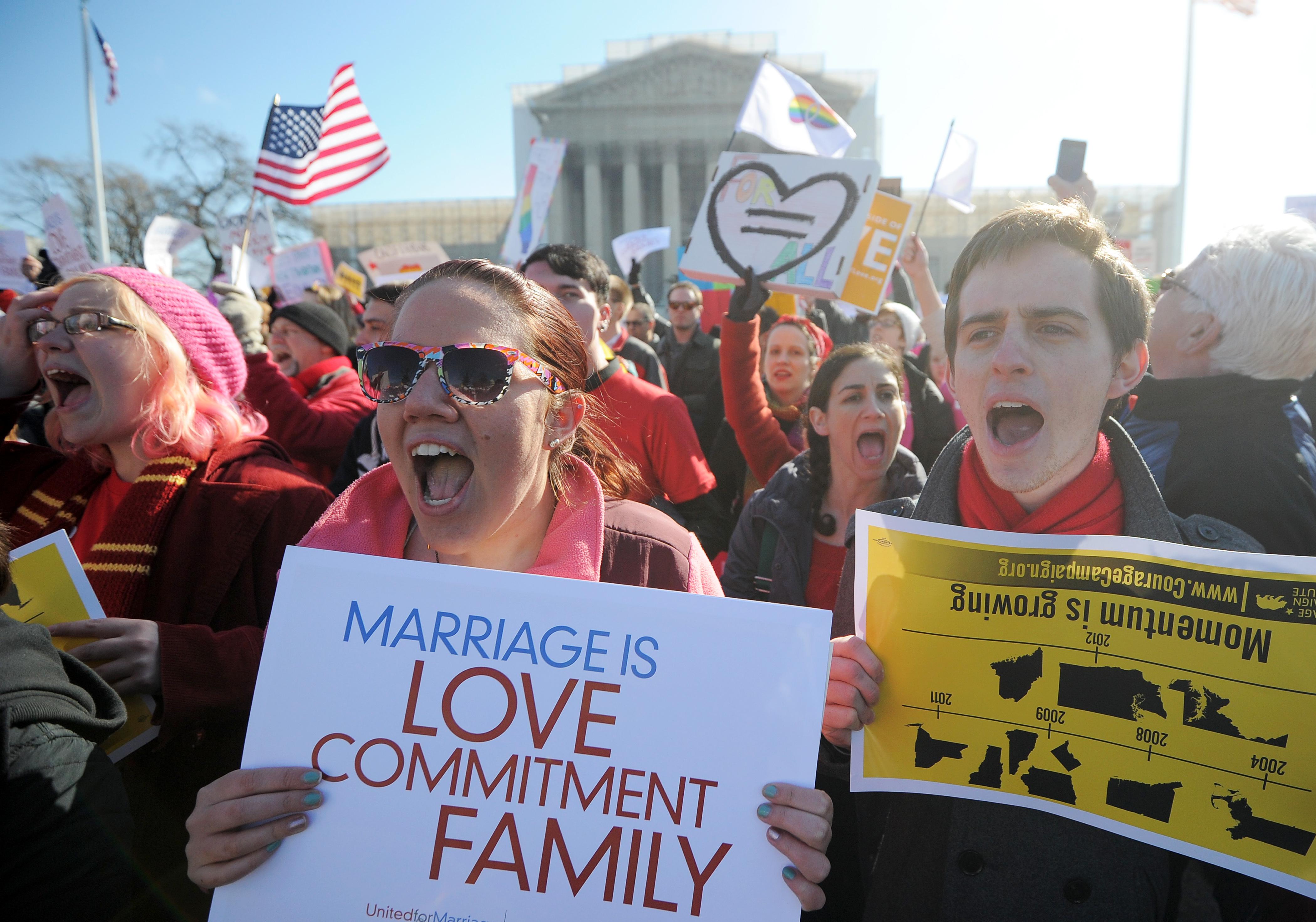I’m a bit skeptical of the working-class-marriage-panic movement that’s afoot primarily in conservative quarters, but what I was really wondering on Monday is what people think we should do about it. A correspondent directed me to the National Marriage Project’s 10-point plan for marriage made me think both more and less kindly of the movement.
Item one on the list is to alter marriage disincentives that exist in major welfare state programs. That seems like a good idea. Whether someone supports it or not, however, is likely to come down to whether the incentives are fixed by making the programs more generous to married couples or stingier to the unmarried.
Item two is to triple the child tax credit for children under age three. This is a great idea, basic left-wing income distribution that has no particular relationship to marriage. They quote National Review’s Ramesh Ponnuru on the merits of doing this, presumably to offer bipartisan cover to what just amounts to an initiative to make the tax code more progressive.
Item three is a hodgepodge of ideas to help young working class men find gainful employment opportunities. Obviously how to do this is something that people disagree about, but it’s hard to imagine anyone with any view of marriage objecting to the idea of finding ways to accomplish this goal.
Item four is to ban the use of anonymous sperm donors, and establish a rule that children born to sperm donors have the right to learn the identity of their father. In theory, that sends the message that “fathers matter” which in turn will allegedly boost marriage and/or reduce unmarried mothers’ willingness to have children. They say Britain, Sweden, Norway, the Netherlands, and Switzerland already have these laws which is nice. If you think this is going to make a big difference well, let’s just say we disagree.
Item five is a real proposal to make divorce somewhat more difficult, involving a minimum one-year waiting period and public provision of reconciliation counseling services. Potentially a good idea, but obviously doesn’t address the kids who are born to parents who’ve never been married.
Item six is about the need to provide better services to stepparents-to-be. This sounds like a good idea but, again, has nothing to do with unmarried people having kids.
Item seven says states should spend money on marriage education programs. I think the standard questions about whether state government is really going to be able to design programs that do this effectively apply very strongly. Primarily sounds like a handout to recipients of grants to provide marriage education.
Item eight calls on the president to “engage Hollywood in a conversation about popular culture ideas about marriage and family formation.” I know conservatives have the notion that Hollywood puts anti-marriage images forward, but I really don’t see it. It’s still the case that per time honored comedy conventions the standard “happy ending” is for people to get married.
Item nine is “Launch Community-Oriented Campaigns about the Facts and Fun of Marriage” which sounds funny to be. But I’ll say it—I love my wife and I’m glad we got married. I think it’s fun! But we also loved each other and had fun when we were cohabitating so….
Item ten is an effort to say that people should be encouraged to speak out about the benefits of marriage. So I’ll say more clearly that not only do I personally enjoy marriage, but the best available evidence seems to suggest that men who get married will earn more money. So go get married, men! On the other hand most men looking to get married will want to find a woman to marry them, and women seem to pay a small earnings penalty.
Long story short, I see some good ideas here, and the ones that aren’t good are mostly harmless. What I don’t see is anything remotely resembling a plausible agenda to reverse the trend toward fewer marriages and more single parenthood. In fact, I think the marriage-panic analysis reads the trend backward. Worriers see stagnating material living standards in the working class and blame the decline of marriage—in effect positive a massive market failure to be corrected through community-oriented campaigns about the facts and fun of marriage. I see material living standards staying constant despite the decline of marriage—women voluntarily choosing to use some of their increased labor market opportunities to forgo marriage, just as societies tend to respond to higher hourly productivity in part by working fewer hours per year. But there are some ideas on this list that are worth doing whatever you think of marriage, and most of the others are, at worst, silly rather than pernicious.
What’s interesting is that there are plenty of policy ideas that I think would be much more clearly effective at preventing out-of-wedlock births that are off the list. For example, if both contraceptives and abortions were provided free of charge, then fewer children would be born, and I see good reason to believe the effect would be especially pronounced among the unmarried. Or you could make contraceptives free for everyone, but abortions free only for unmarried people.
